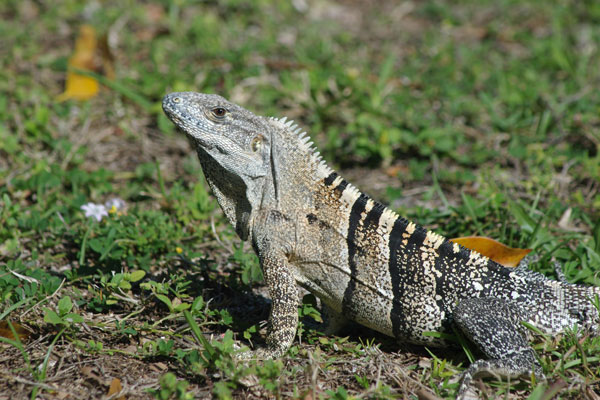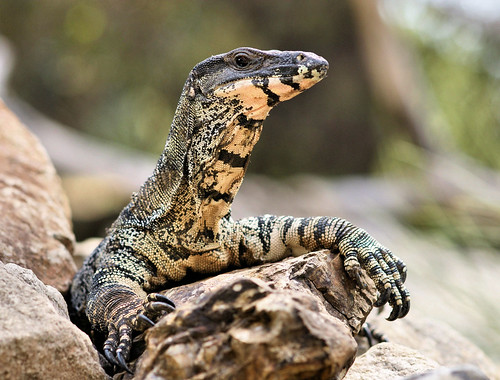Post by Ceratodromeus on Jan 9, 2016 9:47:44 GMT 5
Scientific classification
Kingdom: Animalia
Phylum: Chordata
Subphylum: Vertebrata
Class: Reptilia
Order: Squamata
Suborder: Lacertilia
Family: Iguanidae
Genus: Ctenosaura
Species: C. similis
Description
As the common name hints at, this iguana possesses a dark grey to black body coloration, with distinguishable black barring located midbody. A row of spines runs from the nape of the neck to the vent, giving this lizard its alternative common name. This is a rather large member of Ctenosaura, with most healthy adults measuring 200-249mm(7.87-9.8in) in snout-vent length, with large individuals measuring 299+mm(11.7+in) in snout-vent length{1}. Very large individuals can measure upwards of 340mm(13.38in) in snout-vent length. The tail accounts for two thirds of the lizards' total body length. Males are typically larger then the females, and mature males are easily distinguishable from conspecific females by the large jowls they possess.

Geographic distribution & habitat
The spiny tailed iguana is indigenous to Central America, and its range extends up into Mexico. It was introduced into Southern western penninsular Florida in the 1970's, and has a flourishing, reproducing population{2}. These lizards are particularly fond of burrows, and will commonly utilize burrows crafted by native gopher tortoises, and will readily enter them even if a tortoise is residing inside{3}.

Dietary habits
Neonate lizards feed primarily on invertebrates, and go through an ontogenic shift in their diet. Adult lizards predominately eat plant matter, but will opportunistically eat animals. isopods, othropterans, Hymenopterans, Wolf spiders (Hogna annexa), neonate bark anoles (Anolis distichus), young basilisc lizards (Basiliscus spp.), Southeastern Five-lined Skink (Plestiodon inexpectatus) Young gopher tortoises (Gopherus polyphemus), hatchling sea turtles, and crabs have all been documented in the diet of this lizard{1,4,5,6} In Southern Florida, this species eats around twenty of the same plant species as the gopher tortoise, but are not considered to compete with the tortoise as these plants are not a limited resource{6}.

Reproduction
Mating occurs in the Spring, with females lay anywhere from 12-88 eggs, with an average clutch size of 43 eggs. The larger the female is, the more eggs she can consequently lay {1} . Upon hatching, neonate lizards measure 43-60mm(1.69-2.3in) in snout-vent length, and grow quickly within their first years of life. Interestingly enough, the nonnative population in peninsular Florida grows more slowly then lizards in their native range, namely Nicaragua. This is theorized to be caused by Florida's bitter cold winter, where these iguanas are rarely active --haulting their growth {1} .
References
{1}Avery, Michael L., et al. "Invasive black spiny‐tailed iguanas (Ctenosaura similis) on Gasparilla Island, Florida, USA." Integrative zoology 9.5 (2014): 590-597.
{2}Krysko, Kenneth L., et al. "Distribution of the introduced black spiny-tailed iguana (Ctenosaura similis) on the southwestern coast of Florida." Florida Scientist 66.2 (2003): 141-146.
{3} Engeman, Richard M., et al. "Ctenosaura similis (Black Spiny-Tailed Iguana), i> Gopherus Polyphemus (Gopher Tortoise) Concurrent Burrow Use." (2009).
{4}Avery, Michael L., Eric Tillman, and Kenneth Krysko. "Gopherus polyphemus (gopher tortoise), Ctenosaura similis (Gray's spiny-tailed iguana) predation." (2009).
{5} Krysko, Kennet L., and Juan Smith B. "The Nonnative Black Spiny-tailed Iguana, Ctenosaura similis Gray 1831 (Squamata: Iguanidae), Preying upon the Native Southeastern Five-lined Skink, Plestiodon inexpectatus Taylor 1932 (Squamata: Scincidae), in Southern Florida".(2014).
{6} Krysko, Kenneth L., et al. "DIET OF THE NONINDIGENOUS BLACK SPINY-TAILED IGUANA, CTENOSAURA SIMILIS(GRAY 1831)(SAURIA: IGUANIDAE), IN SOUTHERN FLORIDA." Florida Scientist 72.1 (2009).







